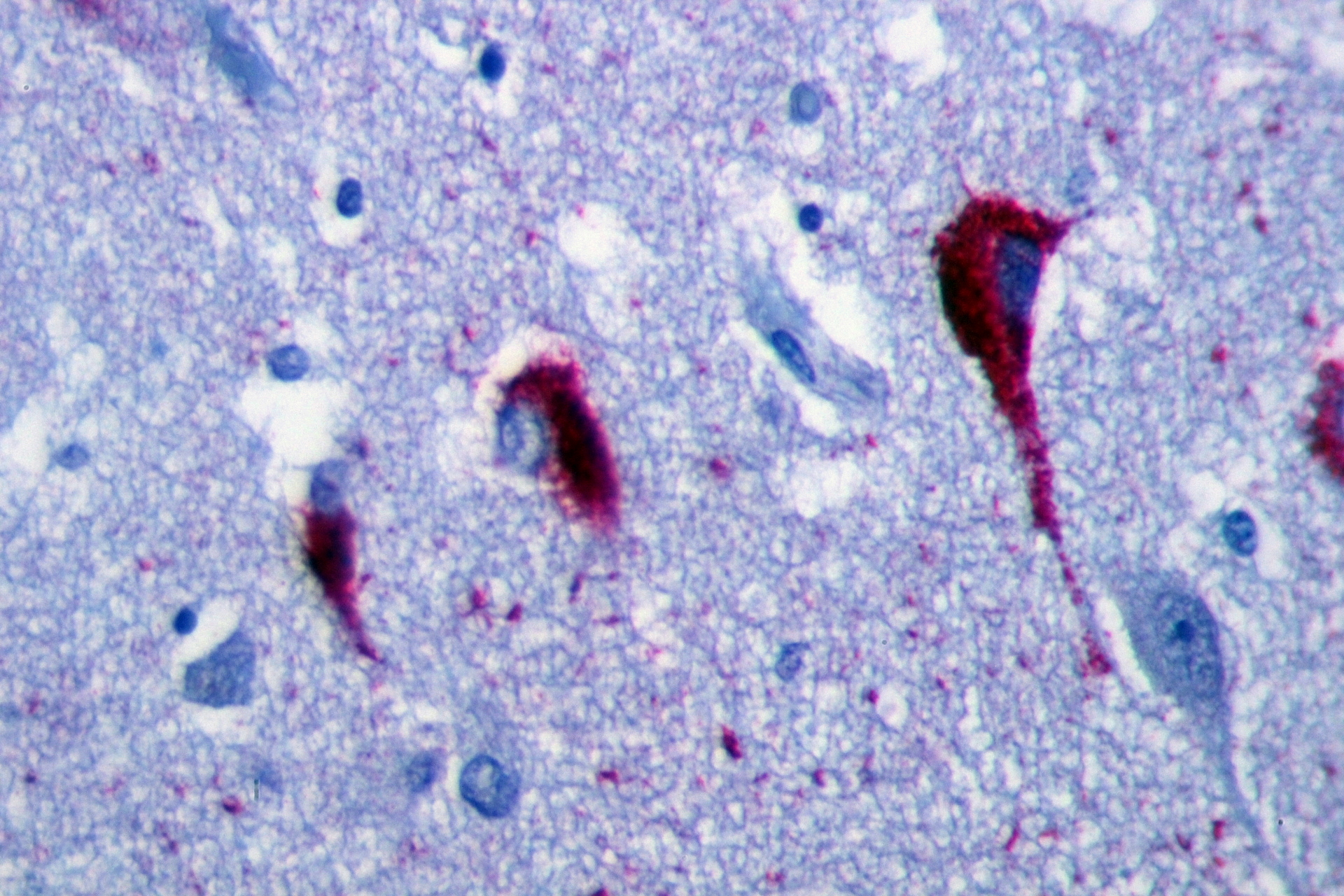
Going toe-to-toe with tau: new insights into the chemical basis of Huntington’s disease
Does tau protein – which causes problems in other neurodegenerative diseases – contribute to Huntington's disease?
We know that the cause of Huntington’s disease is a genetic change, resulting a harmful protein: mutant huntingtin. But other proteins can get dragged into the fray and contribute to the problems faced by HD-affected cells. New research suggests that a rather notorious protein, called ‘tau’ – a known troublemaker in other degenerative brain diseases – builds up and causes damage in HD.
A role for tau in HD?
In order to develop effective treatments for a disease, we need to first understand how it disturbs the normal workings of the body. We know that in Huntington’s disease, the presence of a mutated gene leads causes cells to produce a harmful protein which we call mutant huntingtin. This form of huntingtin is well-known to form into globs of protein, called inclusions or aggregates, and well-known for disrupting the normal functioning of neurons.

Image credit: Patho [CC-BY-SA-3.0]
Now, emerging research from a group in Spain, led by Dr Jose Lucas, has revealed a connection between the mutant huntingtin gene and another notorious protein called tau.
Tau is found in neurons, where it is associated with tiny structures called microtubules. These microtubules function as ‘support beams’, maintaining the cell’s structure, like metal framing supports buildings.
Looking carefully at the brains of HD patients that were donated for research, Lucas’ team found that tau exists clumped together, in rod-shaped structures, in the control centre or ‘nucleus’ of neurons, instead of the microtubules where it usually hangs out. They also measured the total amount of tau in HD brains, and found it to be unexpectedly high.
There are several similar forms of tau. The most prominent are called ‘3-repeat’ and ‘4-repeat’ tau, named for the number of times a particular ingredient is included in the final protein. This ingredient is important – it’s the bit that lets tau stick to microtubules. You can think of these forms of tau as having 3 or 4 ‘hands’ to grab the microtubules with.
As well as there being more tau protein than expected in HD brains, Lucas’ team found that the usual balance of 3 and 4 repeat tau was altered – there was more 4-repeat tau than expected.
Slicing, dicing and splicing
So HD brains have too much tau, and too much of that tau is the 4-repeat kind, and it’s clumping together as strange rods. What’s causing these all tau abnormalities in HD?
First let’s look at how cells make different versions of the same protein.
“This lets us ‘stand on the shoulders of giants’ – we can take advantage of what Alzheimer’s and FTD researchers have already learned about tau, how it causes problems, and how to fight it.”
Our genes are like a recipe book, written in the chemical language of DNA, that tells cells how to build all the different proteins they need. Because these recipes are so critical to the normal functioning of cells, they remain safeguarded in the nucleus. So, to make a protein, the cell first makes a ‘working copy’ of the recipe, made from a DNA-like molecule called mRNA.
Just like some recipes contain optional additions or variations, many genes contain ‘optional’ information that isn’t essential to protein production.
So, our cells first sort through the mRNA in order to get rid of instructions that aren’t needed for the particular variety of protein that’s being made.
This processing of mRNA is done by a group of proteins called splicing factors. They work to cut out the unwanted parts of the mRNA, leaving only the parts necessary for making a protein.
In the case of tau, a single genetic recipe contains instructions for making 3-repeat and 4-repeat tau. The version that’s actually made depends on a splicing factor called SRSF6. When SRSF6 gets involved, the mRNA is snipped in a way that causes the cells to make 4-repeat tau.
Given that his team had found more 4-repeat tau than expected in HD patients’ brains, Lucas’ team wondered whether SRSF6 might be more active in HD. And indeed, they did find elevated levels of SRSF6 in HD neurons. What’s more, that SRSF6 appeared to be sticking inside the clumps of mutant huntingtin. It seems there’s an affinity between SRSF6 and something in those inclusions. One candidate is the mRNA for the mutant huntingtin protein, which SRSF6 has previously been shown to stick to.
The researchers went on to show similar imbalances of 3-repeat and 4-repeat tau in the brains of mice with the HD mutation. And when HD mice were genetically manipulated to produce less tau, some of their usual HD-like movement problems were less severe.
Hitting many birds with one stone

So the overall message of this work is that the mutant huntingtin gene produces mutant huntingtin mRNA, which SRSF6 sticks to. The increased levels of SRSF6 then alter the balance of the mRNA for another protein, tau – causing the overproduction of the 4-repeat form of tau. The 4-repeat tau then forms weird rod structures, which may contribute to the problems of HD brains.
Why is this work important? Why does it matter that rods of 4-repeat tau are forming in neurons?
Tau has a bit of a reputation. It has been linked to other ‘degenerative’ brain diseases such as Alzheimer’s disease, and frontotemporal dementia (FTD), among many more.
In one form of FTD, the presence of too much 4-repeat tau compared to 3-repeat tau is enough to cause neurodegeneration. Sounds familiar! That’s exactly what the Spanish team observed in these HD-affected brains.
In Alzheimer’s disease, tau is seen to form structures called ‘neurofibrillary tangles’, which are large bundles of tau protein that harm neurons.
Noting that tau may be involved in HD could be handy, because it lets us ‘stand on the shoulders of giants’ – we can take advantage of what Alzheimer’s and FTD researchers have already learned about tau, how it causes problems, and how to fight it.
Does this mean Huntington’s disease is actually a tau problem, or ‘tauopathy’, as researchers call conditions where tau is to blame? Not really – we know for sure that HD is caused from a mutated huntingtin gene. So while it seems tau may be involved in HD, it’s certainly not to blame for all the problems that the mutation causes.
This new disease connection does give us a fascinating new way to think about Huntington’s disease and how to treat it – and thanks to the connected nature of science, we already have some insight into what happens when tau gets dragged into the fray.
Learn more
For more information about our disclosure policy see our FAQ…


